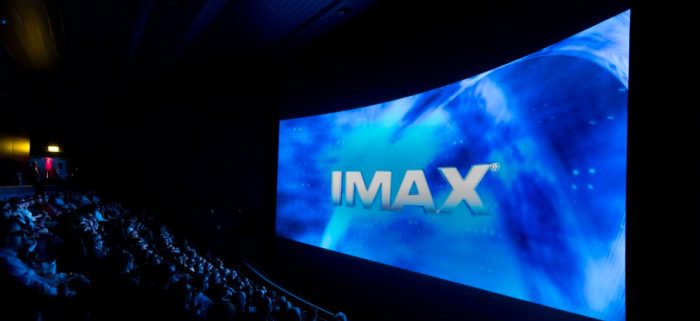
“Movie theaters are dead” has been a common refrain during the coronavirus (COVID-19) pandemic. Or at least, many suggested the pandemic accelerated the death of theaters, with many cinemas shuttering for over a year and studios turning to streaming to debut their once-theatrical releases. After all, who would want to return to theaters when they could simply watch a movie from the comfort of their home?
Plenty of people, it seems, if recent box office receipts are anything to show. And plenty more who are willing to pay top-dollar for the “premium” experience — that is IMAX, state-of-the-art digital projection and sound, and upscale dining. And that premium experience may become the regular experience in our moviegoing post-pandemic, according to industry experts.
A new report from The Hollywood Reporter posits that the “premium” theatrical experience — which includes “state-of-the art digital projection and sound, out-of-the ordinary environs, plush seating and expanded food and drink offerings” — may become “the new normal” post-pandemic.
Already, we’re starting to see that shift, with more than a quarter of moviegoers who pushed Godzilla vs. Kong to the top of the box office charts worldwide paying an upcharge of $3 to $5 for the chance to see the monster movie on IMAX and other premium large-format screens. The Warner Bros. and Legendary tentpole, which shattered pandemic box office records with a worldwide box office haul of more than $400 million (including more than $86 million in America) owes a “larger portion than usual” from premium large-format (PLF) screens, including IMAX, Dolby Cinemas — AMC Theatres’ partner in the U.S. — and Cinemark XD, per THR. The outlet writes:
In the U.S., approximately 27 percent of audiences are seeking out premium large formats to see Godzilla. Usually, that is closer to 15 percent. “People coming back to theaters are seeking out the most premium presentation first,” says Jeff Goldstein, president of domestic distribution for Warner Bros. Adds AMC executive vp worldwide programming and chief content officer Elizabeth Frank: “We are seeing more evidence that patrons are planning their night out. There is more demand for PLF showings and private screening parties.”
Overseas, IMAX is seeing huge returns too. The Chinese blockbuster Detective Chinatown 3 set a record for the most IMAX opening weekend admissions in China at 2.1 million, while the anime hit Demon Slayer: Mugen Train became the highest-grossing IMAX film of all time in Japan with more than $27 million in ticket sales.
In addition to IMAX, there’s the emergence of upscale dining theaters like Alamo Drafthouse and Studio Movie Grill, both of which were able to evade the worst of the pandemic financial hits thanks to the help of the Chapter 11 bankruptcy protection and financing partners. But still, there’s no guarantee that this will save all upscale theaters — the closure of the Arclight Cinemas and Pacific Theaters is just one example of this.
But this is likely what theaters will need to do to survive: offer something that home theaters can’t. While smaller local theaters may have trouble keeping up with this “new normal” — many don’t have the means to offer upscale sight and sound, plush seats and other amenities — this at least means that theaters aren’t dead, they’re just evolving.
The post The “New Normal” for Moviegoing Post-Pandemic May Be the “Premium” Experience Like IMAX, Upscale Dining appeared first on /Film.
0 Comments